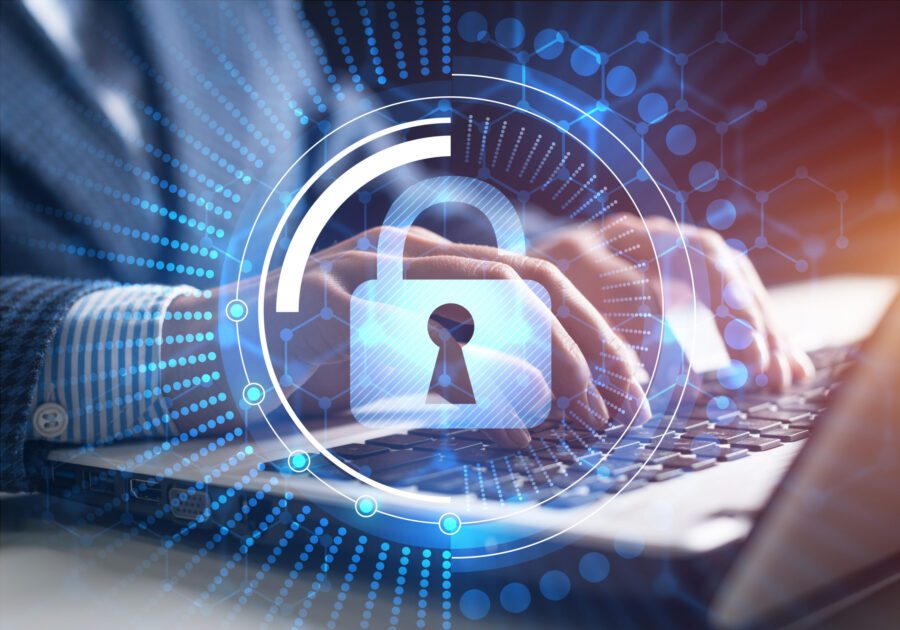In today’s digital landscape, where cyber threats are more sophisticated and pervasive than ever, having a robust cybersecurity strategy is crucial for companies of all sizes. Cyberattacks, data breaches, and security vulnerabilities can lead to significant financial losses, damage to a company’s reputation, and legal ramifications. Therefore, implementing a strong cybersecurity strategy isn’t just an IT concern but a vital business imperative.
This article explores the key steps companies can take to develop and implement a comprehensive cybersecurity strategy that safeguards their assets, data, and operations against evolving threats.
1. Understanding the Importance of Cybersecurity
Cybersecurity involves the practices, technologies, and processes designed to protect digital assets, networks, and systems from cyber threats. As businesses increasingly rely on digital technologies for operations, customer engagement, and communication, the importance of robust cybersecurity becomes evident. The consequences of inadequate cybersecurity can be devastating, including financial losses, intellectual property theft, operational disruption, and legal liabilities.
1.1 The Growing Threat Landscape
Cyber threats are constantly evolving, and hackers are becoming more sophisticated in their approaches. From ransomware and phishing attacks to data breaches and insider threats, companies face a wide range of security risks. The consequences of these attacks can go beyond financial losses, affecting a company’s reputation, customer trust, and regulatory compliance.
1.2 Cybersecurity as a Business Priority
In an interconnected world, cybersecurity isn’t just the responsibility of the IT department—it’s a business-wide priority. Companies must treat cybersecurity as an essential part of their overall business strategy and ensure that every department, employee, and stakeholder understands its importance.
2. Key Components of a Strong Cybersecurity Strategy
Building a comprehensive cybersecurity strategy requires a multi-layered approach that covers various aspects of the organization’s digital infrastructure. Below are the core components that should be included in any robust cybersecurity strategy.
2.1 Risk Assessment and Vulnerability Analysis
Before implementing any cybersecurity measures, it’s essential to assess the risks and vulnerabilities that your organization faces. This involves identifying potential threats, such as cyberattacks, natural disasters, or human error, and evaluating their impact on your business operations.
- Actionable Tip: Conduct regular risk assessments to identify critical assets, potential vulnerabilities, and areas where your organization is most susceptible to attacks. These assessments should be updated periodically to reflect the evolving threat landscape.
2.2 Comprehensive Security Policies and Procedures
A well-defined set of security policies and procedures is the foundation of any cybersecurity strategy. These policies should outline the rules and guidelines for handling sensitive data, using company devices, responding to security incidents, and ensuring compliance with relevant regulations.
- Actionable Tip: Develop policies for data protection, user access control, password management, remote work, and incident response. Make sure that these policies are accessible, easy to understand, and regularly updated.
2.3 Employee Training and Awareness
Employees are often the first line of defense against cyber threats. Social engineering attacks, such as phishing and spear-phishing, rely on human error to bypass technical defenses. By training employees to recognize these threats and follow best practices, companies can significantly reduce the risk of a successful attack.
- Actionable Tip: Implement regular cybersecurity awareness training programs for all employees. These should cover common threats like phishing, the importance of strong passwords, secure use of company devices, and how to report potential security incidents.
2.4 Strong Access Control and Authentication
Implementing strong access control measures is critical in ensuring that only authorized individuals can access sensitive systems and data. Multi-factor authentication (MFA) is a key strategy to prevent unauthorized access, especially for high-risk accounts like system administrators and executives.
- Actionable Tip: Require MFA for all users, especially for access to critical systems and data. Implement role-based access control (RBAC) to limit access to sensitive information based on job roles and responsibilities.
2.5 Data Encryption and Backup
Data protection is at the heart of any cybersecurity strategy. Encrypting sensitive data ensures that even if a hacker gains unauthorized access to your systems, the data remains unreadable. Additionally, regular backups of important data ensure that you can recover quickly in the event of a ransomware attack or data loss.
- Actionable Tip: Encrypt sensitive data both at rest and in transit. Implement a robust data backup strategy that includes regular backups and secure storage in multiple locations (e.g., cloud and on-premises).
2.6 Incident Response and Disaster Recovery Plans
Despite best efforts, security breaches can still occur. Having a well-defined incident response and disaster recovery plan ensures that your organization can quickly respond to, contain, and recover from a cyberattack. This plan should outline the steps to take when a breach is detected, including how to communicate with stakeholders, mitigate the impact, and restore normal operations.
- Actionable Tip: Develop and regularly test your incident response and disaster recovery plans. These should include procedures for isolating affected systems, communicating with customers and regulatory bodies, and restoring data from backups.
2.7 Continuous Monitoring and Threat Intelligence
Cyber threats are constantly evolving, and organizations need to remain vigilant. Implementing continuous monitoring of your networks and systems can help detect suspicious activity and identify vulnerabilities before they are exploited. Additionally, leveraging threat intelligence helps organizations stay informed about emerging threats and attack techniques.
- Actionable Tip: Use intrusion detection systems (IDS) and security information and event management (SIEM) tools to monitor your network for suspicious activity. Subscribe to threat intelligence feeds and security bulletins to stay updated on the latest vulnerabilities and exploits.
2.8 Compliance with Legal and Regulatory Requirements
Different industries and regions have varying cybersecurity regulations and standards. For example, the General Data Protection Regulation (GDPR) in the European Union imposes strict requirements on how companies handle personal data. Compliance with these regulations is not only essential to avoid fines but also helps build trust with customers.
- Actionable Tip: Stay up to date with cybersecurity regulations relevant to your industry (e.g., GDPR, HIPAA, PCI-DSS) and ensure that your strategy aligns with these requirements. Regular audits can help ensure compliance.
3. Implementing a Cybersecurity Strategy: Best Practices
Building a cybersecurity strategy involves more than just choosing the right tools and technologies. It requires a disciplined approach to execution, as well as a company-wide commitment to cybersecurity.
3.1 Adopt a Proactive Approach
Cybersecurity isn’t just about responding to incidents; it’s about anticipating threats and taking proactive steps to prevent them. A proactive approach includes continuously identifying risks, staying ahead of new threats, and implementing preventative measures to avoid breaches.
- Actionable Tip: Adopt a “zero-trust” security model, where every user, device, and connection is treated as potentially untrusted. Regularly patch and update systems to address vulnerabilities before they can be exploited.
3.2 Integrate Cybersecurity Into the Business Culture
Cybersecurity should be embedded in the company’s culture, with leadership setting the tone for a secure environment. All employees, from top executives to entry-level staff, must understand their role in protecting company assets and data.
- Actionable Tip: Foster a security-conscious culture by promoting awareness, offering incentives for secure behaviors, and involving leadership in cybersecurity initiatives.
3.3 Collaborate with Third-Party Vendors
Many companies rely on third-party vendors for services such as cloud computing, software development, and data storage. However, these vendors may present a potential security risk if they don’t follow the same cybersecurity standards as your organization. It’s essential to vet vendors carefully and ensure they comply with your security policies.
- Actionable Tip: Conduct due diligence when selecting vendors, and ensure that they adhere to cybersecurity best practices. Include cybersecurity clauses in vendor contracts that require them to follow specific security standards and protocols.
3.4 Regularly Review and Update Your Cybersecurity Strategy
Cyber threats are constantly evolving, and so should your cybersecurity strategy. A one-time implementation of security measures isn’t enough. Regular reviews and updates are necessary to ensure that your cybersecurity strategy remains effective.
- Actionable Tip: Schedule regular reviews of your cybersecurity policies, risk assessments, and security tools to ensure they are still aligned with the current threat landscape and business objectives.
4. Challenges in Implementing a Cybersecurity Strategy
While implementing a strong cybersecurity strategy is essential, there are several challenges that organizations may face along the way:
4.1 Limited Resources and Budget Constraints
Cybersecurity requires investment in both technology and talent. Many small and medium-sized businesses (SMBs) may find it difficult to allocate the necessary resources for a robust cybersecurity infrastructure.
4.2 Employee Resistance and Lack of Awareness
Employees may resist new security protocols or feel overwhelmed by security procedures. Overcoming this resistance requires effective communication, training, and leadership buy-in.
4.3 Evolving Threat Landscape
The speed at which cyber threats evolve can make it difficult for organizations to keep up. Companies must invest in continuous threat monitoring, intelligence, and tools to stay ahead of potential attacks.
Conclusion
Cybersecurity is not a one-time project—it’s an ongoing process that requires constant attention and adaptation to new threats. By implementing a comprehensive cybersecurity strategy that includes risk assessments, strong policies, employee training, and proactive measures, companies can protect themselves from potential threats and ensure the continuity of their operations.
A strong cybersecurity strategy not only safeguards an organization’s assets and reputation but also builds trust with customers and partners. As the digital landscape continues to evolve, companies must remain vigilant, agile, and committed to protecting their digital environment from emerging threats.




